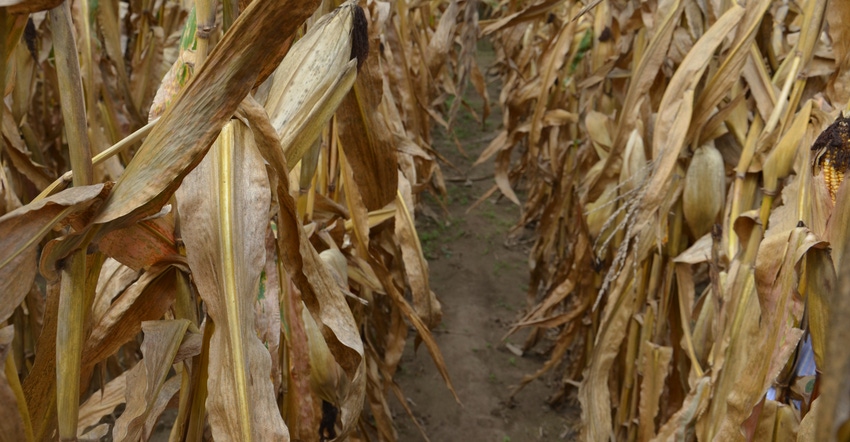November 29, 2017

Certain corn hybrids are more variable in plant height and ear placement. The grower for the Corn Watch 2017 project planted two hybrids in strips of 24 rows each. One hybrid was shorter and very uniform in plant and ear height. The other was taller and more variable in plant and ear height. Many hybrids grown these days are more variable in these characteristics. Does it matter?
Not really. But why are they variable? There are several reasons. Here’s a plant breeder’s explanation.
Why hybrids vary
In classical corn hybrid development, parent lines are developed by inbreeding, or self-pollinating silks of a plant to pollen from its own tassels. Most corn breeders continue the inbreeding process for at least six generations until 99% genetic uniformity, homozygosity, is reached.
These inbred lines still have some genetic variability, but for practical purposes, they’re phenotypically uniform. Competition in the seed industry is so intense that most corn breeders start crossing and testing inbred lines in hybrid combinations before they’re fully genetically uniform.
After identifying promising lines, breeders incorporate genetic traits for herbicide and insect resistance. A lot of this is done in greenhouses or tropical nurseries with several generations per year. When genetic traits are introduced, we bring some genes of the donor parent into the desirable recurrent parent. This may be done by conventional backcross breeding or by gene-editing technologies.
Variability healthy?
A famous corn breeder, the late Glen Stringfield, who worked for Ohio State University and later Dekalb Hybrids, developed widely used inbred lines like Oh 07, Oh 26, Oh 43 and Oh 51A. He believed inbred lines and hybrids should carry some variability that would give them some plasticity to adapt to seasonal changing environments.
Other methods of developing inbred lines include backcrossing existing lines to other inbred lines and bringing in desirable genes. Then breeders carry out self-pollination for several generations to make the line genetically uniform. This method may be used when breeders are trying to bring in polygenic resistance to diseases or high row number traits from exotic germplasm.
For example, some breeders incorporate genes for tolerance to northern or southern leaf blight. Bringing in genes from tropical corn into temperate Corn Belt lines and hybrids would also involve many genes.
How uniformity happens
Some hybrids may be very uniform if they’re produced by doubling of haploids, which are monoploids. Corn is a diploid and carries two sets of chromosomes in every cell. Edward Coe at the University of Missouri found an abnormal corn that would produce a high frequency of haploid plants with only one set of chromosomes.
By use of a chemical called colchicine, he doubled the number of chromosomes, producing pure inbred lines quickly without inbreeding. Coworkers and I used this method at DeKalb, Ill., in 1964 and 1965 for developing inbred lines with the use of the purple embryo marker.
It was not until 2007 that scientists at Syngenta rediscovered this method to speed up the process of producing completely uniform inbred lines. When these lines are crossed with other similarly developed lines, they produce very uniform hybrids.
However, some variability will be introduced during the insertion of genetic traits. Most seed companies now use haploid methods along with backcrossing techniques to develop improved hybrids.
Nanda is president of Agronomic Crops Consultants LLC. Email [email protected] or call 317-910-9876.
About the Author(s)
You May Also Like






